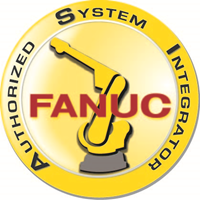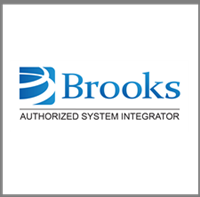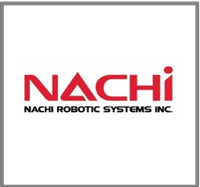Robot Automation
ABCO is an industry leader in factory automation fueled by robots for manufacturing companies, leading to higher productivity, lower costs, increased worker safety, and improved quality.
-2.png)
Choosing the right Robot
Choosing the best robot for you application in todays fast paced automation world can be challenging
The diverse types of industrial robots offer various capabilities, ensuring that businesses can find the right robotic solutions to enhance efficiency, productivity, and safety in their operations. These benefits will only increase as new technologies in machine learning (ai) emerge. If you need help deciding which robot is best to automate your manufacturing process, please contact your ABCO Account Manager or any of our team members here
Articulated Robots
Articulated robots, resembling the human arm with rotary joints, are highly versatile. They typically have six degrees of freedom, providing a wide range of movement, and are commonly used for tasks such as welding, painting, and assembly.
Advantages: High speed, extensive work envelope with minimal floor space, flexible alignment with multiple planes.
Disadvantages: Requires complex programming and dedicated controllers, intricate kinematics.
Collaborative Robots (Cobots)
Cobots are designed to work alongside human operators, enhancing productivity and safety. They are user-friendly, with built-in sensors to detect and avoid collisions, making them ideal for tasks like assembly, packaging, and inspection.
Advantages: Safe to operate around humans, easy to program, flexible deployment.
Disadvantages: Lower payload capacity, slower than traditional industrial robots.
Cartesian Robots
Cartesian robots, or gantry robots, move linearly along three perpendicular axes (X, Y, Z). They are suitable for tasks requiring high precision and heavy load handling, such as 3D printing, CNC machining, and material handling.
Advantages: High accuracy, simple operation, easy offline programming, customizable, handles heavy loads, cost-effective.
Disadvantages: Requires a large operational and installation area, complex assembly, limited to one direction of movement at a time.
Cylindrical Robots
Cylindrical robots have a rotary joint at the base and at least one prismatic joint, allowing vertical and horizontal movements. They are compact and can reach tight spaces, making them ideal for pick-and-place tasks and simple automation processes.
Advantages: Simple operation and installation, minimal assembly, 360-degree reach from the base, minimal floor space, handles heavy payloads.
Disadvantages: Poor performance with obstacles, low accuracy in rotary motion.
SCARA Robots
Selective Compliance Assembly Robot Arm (SCARA) robots excel in lateral movements and are perfect for high-speed assembly and pick-and-place tasks. Their rotary shafts are positioned vertically, and the end effector moves horizontally.
Advantages: High speed, excellent repeatability, large workspace.
Disadvantages: Limited to planar surfaces, challenging offline programming, requires a dedicated controller.
Delta Robots
Delta robots, also known as parallel-link robots, use three parallel arms connected to a common base, enabling high-speed and precision tasks. They are widely used in packaging, sorting, and high-speed pick-and-place operations.
Advantages: Very high speeds, high operational accuracy.
Disadvantages: Complex operation, requires dedicated controllers.
Polar Robots
Polar robots, with their spherical work envelope, are used for tasks such as die casting, injection molding, welding, and material handling. Their axes form a polar coordinate system, enabling a wide range of movement.
Advantages: 360-degree range of motion, large work volume, minimal floor space.
Disadvantages: Short vertical reach, low accuracy and repeatability in rotary motion, requires a sophisticated control system.
Autonomous Mobile Robots (AMRs)
AMRs are designed for dynamic navigation and can move independently within a facility, transporting materials and products. They use advanced sensors and AI to navigate around obstacles and optimize routes.
Advantages: High flexibility, no need for fixed infrastructure, can operate in dynamic environments.
Disadvantages: Higher initial cost, requires complex programming and integration.
ABCO Integrates Robots
ABCO has many years of experience in developing and implementing robotic systems. We can provide any form of robotic automation ranging from application evaluations to individual cells to turnkey solutions. ABCO will work provide you a solution based on your stated goals. We work with the best robot manufacturers in the industry and can help you pick out the right robot(s) for your needs.
Benefits of Robot Automation
Factory automation fueled by robots provides many benefits to manufacturing companies, including higher productivity, lower costs, increased worker safety, and improved quality.
Lower Costs
With robotic systems, manufacturers can experience faster manufacturing times and increased efficiencies, which translates into producing more product in a timely manner. Over time those improved efficiencies lead to cost savings due to reduced waste, lower operational expenses, and decreased hands-on labor.
Employee Safety
Employees reap the bulk of the automation rewards. Robots can work in challenging environment, including hot, very cold, and very hazardous areas, so workers are to be exposed to any of those conditions. In addition, employees can be moved from performing tedious labor-intensive tasks to assignments that offer more engaging responsibilities.
Improved Quality
Additionally, manufacturers can see improved quality due to consistent product fabrication and quality control systems that use vision systems to continually check for defects.





